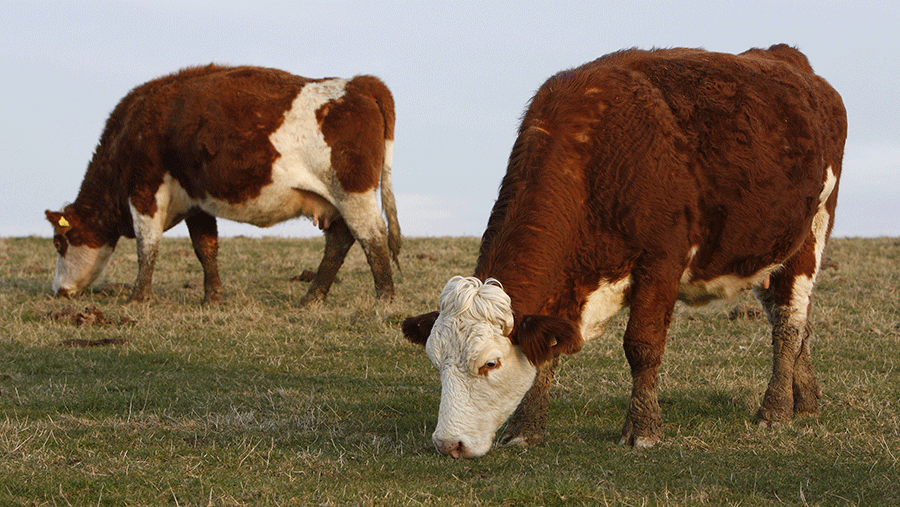Opinion: Bovine TB and the gut-wrenching voicemail
“They look a real picture, Stephen,” said the head auctioneer of my local livestock market as we surveyed my latest batch of homebred purebred Sussex cattle in the field.
“Some are proper butchers’ beasts,” he continued, “and they ought to come up to my market and be bought by butchers rather than go deadweight and then to the supermarket.”
So it was that we picked out the three choicest heifers for the next fatstock market day.
As we were finalising arrangements and writing down eartag numbers my phone rang in my pocket but I ignored it and let it go to voicemail.
 Stephen Carr farms an 800ha sheep, arable and beef farm on the South Downs with his wife Fizz.
Stephen Carr farms an 800ha sheep, arable and beef farm on the South Downs with his wife Fizz. I was having too good a time to answer my phone as my visitor waxed lyrical about the condition and conformation of my cattle and said how nice it was to see “the local breed thriving under an organic system and living entirely off grass.”
See also: AHDB issues beef specs advice to avoid penalties
I saw him to the field gate, thanked him for coming and, as his 4WD chugged into the distance, accessed my voicemail:
“This is a message for Mr Carr from the Animal and Plant Health Agency. I’m afraid one of the cattle that you sent off for slaughter last Thursday has come back with lesions suggestive of TB so I have had to place you under TB2 restrictions.”
I wasn’t immediately sure what “TB2 restrictions” meant because I haven’t had a bTB reactor on the farm for over three years, but I knew enough to be sure that my fat heifers would not now be allowed near a livestock market.

Sussex cattle, similar to Stephen’s © Rex/Shutterstock
The best I could hope for was for them to be licensed to go to a deadweight centre and face the gauntlet of a carcass classification grid.
But the risk of exposing my traditionally bred cattle to a grading system with up to 250 opaque categories is only the tip of the cost iceberg that I now face if my cattle have yet again fallen victim to the plague of bTB.
To be under bTB movement restrictions is to be plunged back into a rolling 60-day whole herd bTB testing regime that can go on for years (in a particularly bad run I once had to test my 1,300 head of cattle every 60 days continuously for five years).
It is also to be reminded of just how little progress has been made in policy terms in tackling England’s bTB cattle epidemic over the past 20 years, unlike in countries like the Republic of Ireland where there has been substantial progress in reducing the number of cattle reactors.
We are told by the NFU that we should be grateful for the Westminster government’s badger cull in England but I can’t raise any enthusiasm for it.
Contrast our ponderous “proactive” badger cull (where, disgracefully, the cost of organising a badger cull to address the public health matter of bTB in cattle has been foisted on farmers) with the dynamic “reactive” badger cull that is being vigorously pursued and fully funded by the Irish government.
Rather than years of planning and ponderous “roll-out” in certain licensed areas, any farm in the Republic that records even a small number of bTB reactors sees the government remove all the badgers within a wide radius of that farm.
So, as the English government pursues its cumbersome cull, my East Sussex-based Sussex cattle herd once more await their fate. The last time they fell foul of the disease it was carnage.
I’m hoping for better luck this time because I’m sure my local cattle auctioneer would agree with me that it was anything but a “real picture” to see a third of my pedigree in-calf cows carted off to the incinerator.
